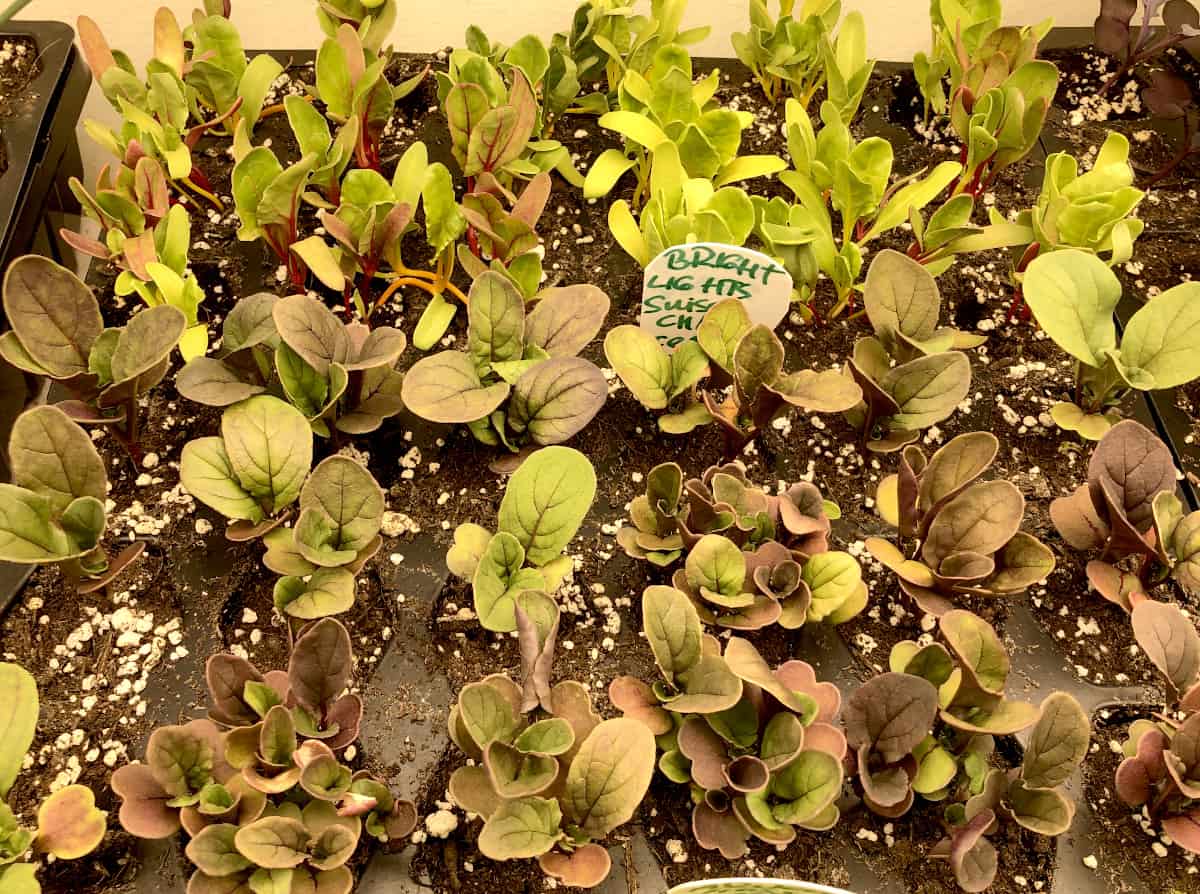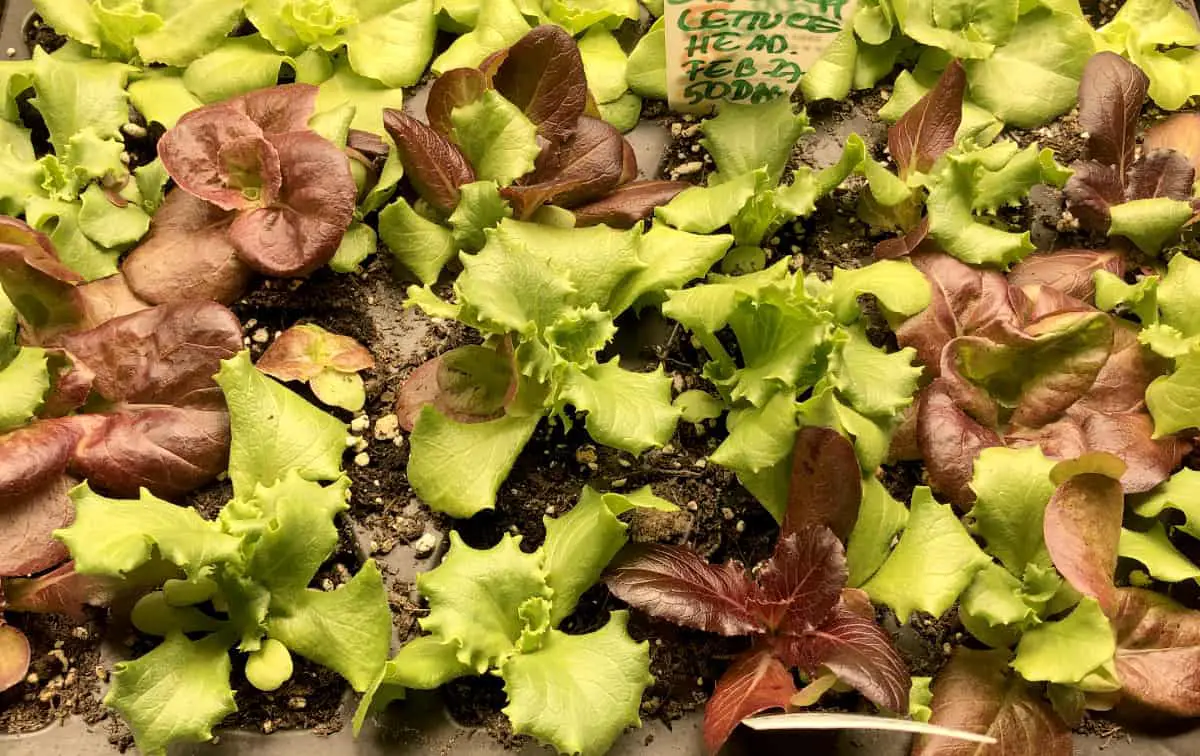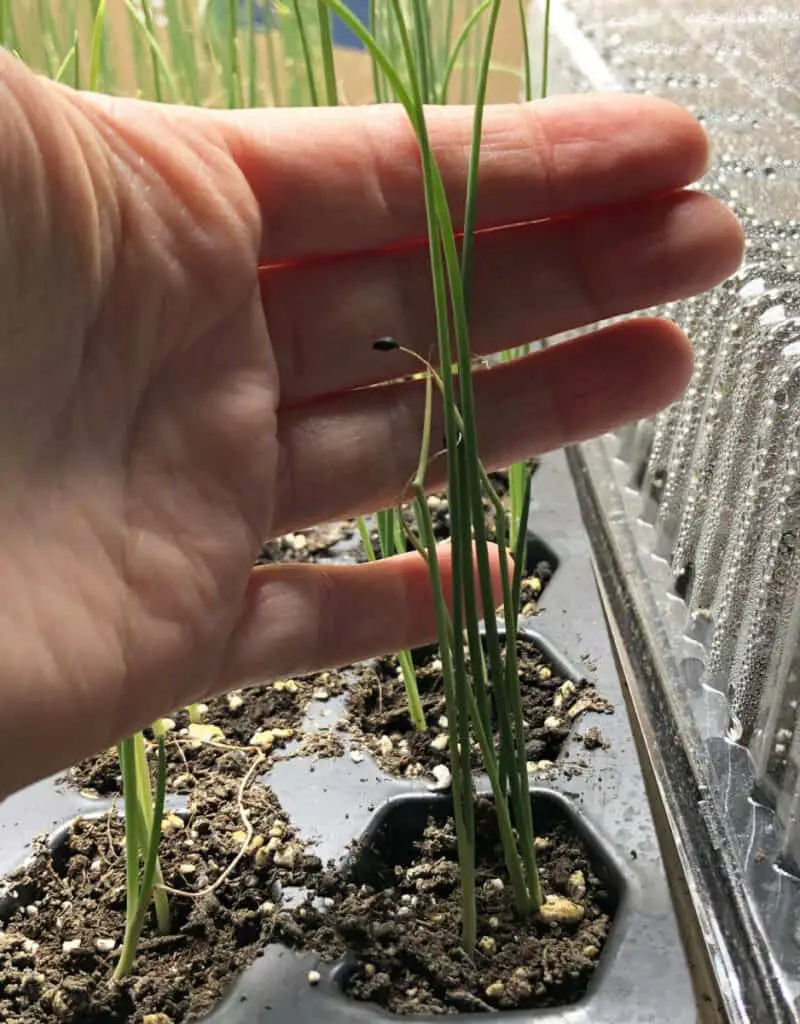I absolutely like to multi-sow my vegetables. Since I garden in a very limited space with not even the whole garden in one spot, but rather multiple small growing spaces in several spots, multi-sowing is a way to go for me. I multi-sow what I possibly can save space and hustle for myself. I you too like me to garden in a smaller or limited space, this method will be a lifesaver for you too.
Multi-sowing is sowing multiple seeds together in the same growing space. The seeds are sowed in groups of 2 or more, they grow together their whole growing cycle in a clump until they are harvested. They are not to be thinned out. At harvest, the largest fruit on the outside of the group is harvested first, leaving the smaller fruit to grow larger. Or, if preferred, the whole clump can be harvested at once.

Why multi-sow in a home garden
Multi-sowing is a great technique for a pantry stocking garden. Using this method in your home garden allows you to grow more plants in a small growing area. Less compost or potting soil is needed to grow more plants. Some plants of the same type prefer to be planted together in a group. You have more growing space to grow more vegetables as single plant spacing is not relevant when growing in clumps. It increases the number of vegetables you can grow, hence, a larger and continuous harvest. And what home grower would not like that? It is also easier to protect the vegetables from pests as you have them nicely all in clumps, rather than in a single row.
If you are worried that the vegetables will not have enough space to grow if they are sowed together in a clump, let me help you dispel your concern. As the vegetables grow grouped together, they swell up and push each other out making enough space for themselves. Hence, no need to worry there will be no space for the poor veg to grow. A growing plant has a lot of strength. Have you ever seen a fragile plant growing out of a rock or paved road, or walkway? Yes, I am sure you did. If that little plant was able to push through all the hard surfaces, you do not need to worry about your garden vegetables pushing each other out to make space for themselves. As they grow, they will push each other out of the way and spread sideways.
If you are a mother, grandmother, or working person, I am sure you have a life besides gardening, multi-sowing will save you so much time! As you start your seeds indoors or direct sowing, you will save an enormous amount of time and labor sowing in clumps. If you care for a clump, you care for 2-5 veggies at once. It is more time and labor efficient compared to caring for each 2-5 individual plants.
Benefits of multi-sowing, or clump-sowing
- Multi-sowing saves time sowing, harvesting, transplanting
- It is less labor intensive
- Sowing in clumps saves compost, soil, and potting mix when sowing in seed starting trays
- It also saves growing space, as you can grow more vegetables in a smaller amount of space
- No thinning needed
- It is easier to protect your plant from pests
- Does not require single spacing

What vegetables to multi-sow
Vegetables that are suitable to multi-sow are leeks, onions for bulbs, and green onions also called scallions. Root vegetables like beets, radishes, and turnips. Herbs, including basil, cilantro, parsley, and dill. Leafy greens like arugula, lettuce for salads, spinach, Bok Choy, kale, and Swiss chard. And peas.

Multi-sowing is not suitable for all vegetables. Some vegetables like to grow in groups and like to keep company. But other vegetables need their own space to grow healthy and well.
How to harvest vegetables from multi-sowing in clumps
If you wish, the whole clump can be harvested at once. The vegetables on the outside of the clump might be bigger than the ones on the inside of the clump as they had more space to expand. Or you can use multi-sowing for continuous harvest. Harvest the largest ones of the clump. Leave the smaller ones to grow and expand more in size. Then come and harvest some more. Vegetables from the clump are harvested by wiggling, then twisting and pulling it out. Hold the other vegetables in place with the other hand. Harvesting by wiggling, twisting, and pulling the other vegetable you will leave the roots of the others nicely intact and in place. Then push the soil back to cover the hole after harvesting.
This method can be applied as soon as you start the seeds! If you need help and a little guidance on How to start seeds and care for seedlings, click, here.
It is early spring, the best time to sow and grow staple foods for your family and friends. Visit, Best staple foods to grow in a garden. In this article, I share what are some of the best pantry staple vegetables and how to identify your family’s staple foods! Not all of us like to eat the same fruits and vegetables. Learn in my article, how to find out what would be your family staple and how to find it out! It is easy to discover what you should grow in your home garden if you follow the advice provided in the article.
If you wish to provide for your family not only during the growing season but also outside of the growing season, visit What can I plant for food storage, where I talk about what vegetables that last the longest storage, where to store harvest, where should vegetables be stored at home and much more!
While I am sure, the multis-sowing method is nothing new in the gardening world, and many gardeners have used it for generations, I learned this method from Mr. Charles Dowding a few years into gardening. There is much to learn from this grower! If you wish to visit his website, you can do so at charlesdowding.co.uk.
Many times, we tend to overthink, or are guided in many different directions on how to plant what. We just have to find what works best for our growing space and our workload. As for me, I was thankful to find out from someone who has been sowing seeds using this method for decades and I did not have to learn it by trial and error, or discover it years and years into gardening. It is so helpful to listen to the gardeners’ wisdom and learn from them. This also is one of the reasons I am running this Pantry Stocking Garden blog. I do not claim I know it all, because nobody knows it all. But I wish to share what I know works for me with others who are looking to learn. I also constantly look to learn new things when it comes to gardening. Things that would help me enlarge my harvest, save time and labor, how do things easier way, and such.
Please share with me and others, what was that one thing you learned years ago from someone and are so thankful you did.
Related read:
The best way to start seeds outside
How to start seeds without grow lights

